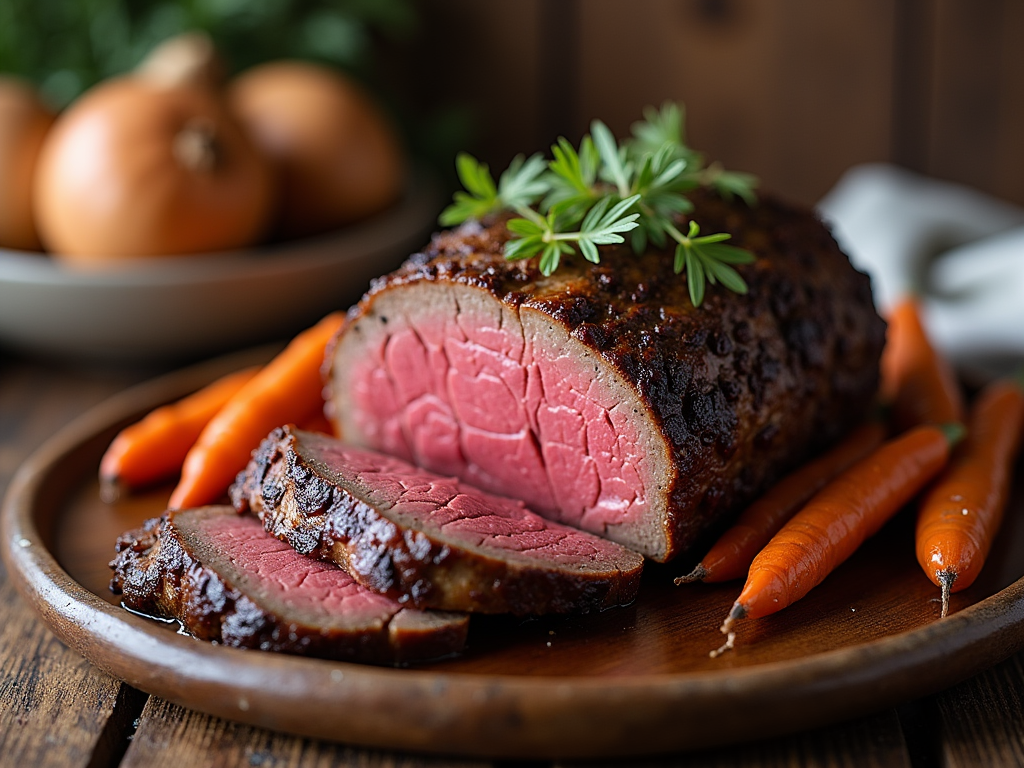Elk meat has become increasingly popular among health-conscious individuals due to its lean profile and rich flavor. For those looking to create a delicious and nutritious meal, slow-cooking an elk roast is an excellent option. This method not only ensures tender, juicy meat but also allows for a hands-off approach to cooking, perfect for busy lifestyles. In this comprehensive guide, we’ll explore the best techniques for preparing a mouthwatering elk roast in your slow cooker.
Why Choose Elk Meat?
Before diving into the cooking process, let’s consider why elk meat is a fantastic choice for health-conscious eaters:
- Low in fat and cholesterol
- High in protein
- Rich in essential nutrients like iron and B vitamins
- Sustainably sourced (often from wild populations or small farms)
Preparing Your Elk Roast
Selecting the Right Cut
When choosing an elk roast for slow cooking, opt for cuts from the shoulder or hindquarters. These areas tend to be tougher and benefit greatly from the low, slow cooking process. Popular cuts include:
- Chuck roast
- Bottom round roast
- Shoulder roast
Thawing and Trimming
If your egg roast is frozen, thaw it in the refrigerator for 24-48 hours before cooking. Once thawed, trim any visible silver skin or excess fat. While elk is naturally lean, removing these elements will improve the texture of the final dish.
Seasoning
Elk meat has a rich, slightly sweet flavor that pairs well with a variety of seasonings. Consider creating a dry rub using:
- Salt and freshly ground black pepper
- Garlic powder
- Onion powder
- Dried herbs like thyme, rosemary, or sage
Alternatively, you can marinate the roast overnight in a mixture of:
- Olive oil
- Red wine or apple cider vinegar
- Minced garlic
- Fresh herbs
- Worcestershire sauce
The Slow Cooking Process
Searing for Flavor
While not strictly necessary, searing your elk roast before slow cooking can enhance its flavor profile. To sear:
- Heat a tablespoon of oil in a large skillet over medium-high heat.
- Once hot, add the seasoned roast and cook for 3-4 minutes on each side until browned.
- Transfer the seared roast to your slow cooker.
Adding Aromatics and Liquid
To create a flavorful base for your egg roast, consider adding:
- Chopped onions, carrots, and celery
- Minced garlic
- Fresh herbs like rosemary or thyme stems
- 1-2 cups of liquid (beef broth, red wine, or a combination)
Cooking Time and Temperature
For the best results, follow these guidelines:
- Cook on low for 8-10 hours
- Cook on high for 4-6 hours
The internal temperature of the roast should reach 145°F (63°C) for medium-rare. However, for a more tender result, you may want to cook it until it reaches 165°F (74°C) and easily shreds with a fork.
Enhancing Your Slow-Cooked Elk Roast
Creating a Flavorful Gravy
Don’t let those delicious cooking juices go to waste! Here’s how to turn them into a rich gravy:
- Remove the cooked elk and vegetables from the slow cooker.
- Strain the cooking liquid into a saucepan.
- In a small bowl, mix 2 tablespoons of cornstarch with 1/4 cup of cold water.
- Whisk the cornstarch mixture into the cooking liquid and simmer until thickened.
- Season with salt and pepper to taste.
Serving Suggestions
Complement your egg roast with these healthy side dishes:
- Roasted root vegetables
- Mashed cauliflower
- Sautéed green beans
- Quinoa pilaf
- Mixed green salad
Nutritional Benefits of Slow-Cooked Elk Roast
| Nutrient | Amount per 4 oz serving |
|---|---|
| Calories | 150 |
| Protein | 29g |
| Fat | 3g |
| Iron | 15% DV |
| Zinc | 35% DV |
Tips for Perfect Slow-Cooked Elk Roast
- Don’t overcook: Elk is lean and can dry out if cooked too long.
- Use aromatics: Onions, garlic, and herbs infuse flavor throughout the cooking process.
- Let it rest: Allow the roast to rest for 10-15 minutes before slicing or shredding.
- Experiment with flavors: Try different herb combinations or add mushrooms for an earthy touch.
- Save leftovers: Shredded elk makes excellent sandwiches or tacos the next day.
Frequently Asked Questions
Q: Can I use frozen elk roast in the slow cooker?
A: It’s best to thaw the roast completely before slow cooking to ensure even cooking and food safety.Q: How do I know when the elk roast is done?
A: Use a meat thermometer to check the internal temperature. For medium-rare, aim for 145°F (63°C). For a more tender, shreddable texture, cook to 165°F (74°C).Q: Can I add vegetables to cook with the roast?
A: Absolutely! Root vegetables like carrots and potatoes can be added at the beginning of cooking. For softer vegetables, add them in the last 1-2 hours.Q: Is it necessary to brown the roast before slow cooking?
A: While not essential, browning the roast can enhance the flavor through the Maillard reaction. It’s an extra step that many find worthwhile.Q: How long can I store leftover elk roast?
Properly stored in an airtight container, cooked elk roast can last 3-4 days in the refrigerator or up to 3 months in the freezer.In conclusion, slow-cooking an elk roast is an excellent way to enjoy this lean, flavorful meat while reaping its nutritional benefits. By following these guidelines, you’ll be able to create a delicious, health-conscious meal that’s sure to impress. Whether you’re a seasoned Elk enthusiast or trying it for the first time, the slow cooker method offers a foolproof approach to cooking this unique game meat. So why not give it a try? Your taste buds—and your health—will thank you!
- What Is the Best Cooking Oil for Diabetics? Your Comprehensive Guide to Heart-Healthy Choices - October 31, 2024
- What Happens If You Drink Cooking Oil? Understanding the Risks and Effects - October 31, 2024
- Why Do My Eyes Burn After Cooking with Oil? Unveiling the Sizzling Mystery - October 31, 2024

